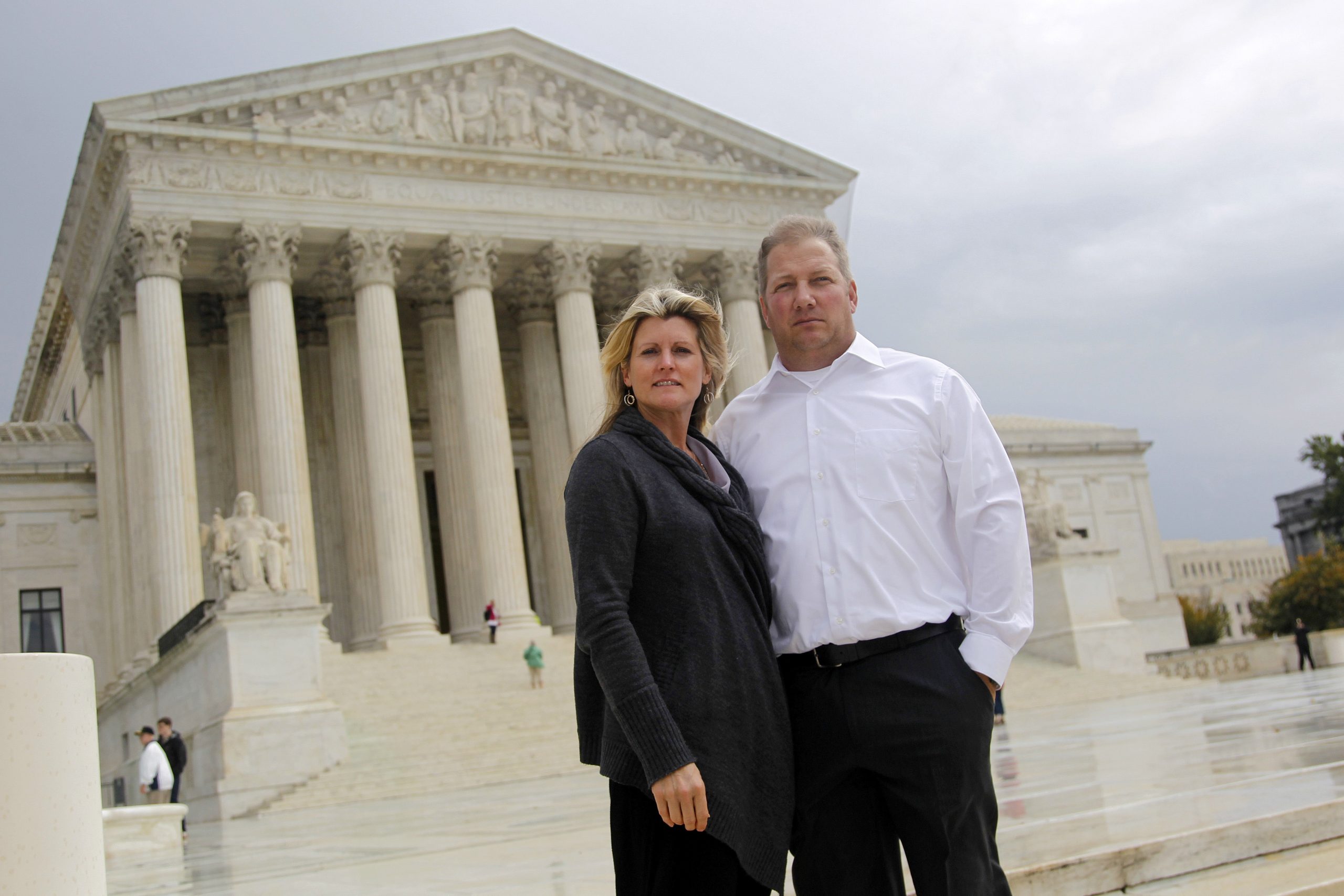The Supreme Court scaled back the authority of the Environmental Protection Agency and Army Corps of Engineers to regulate “waters of the United States” broadly under the Clean Water Act, a win for landowners and business groups that argued the agencies have been overregulating small bodies of water such as wetlands.
In a technically unanimous ruling authored by Justice Samuel Alito, the court said the 1972 Clean Water Act’s reference to “waters” that can be regulated are limited to “geographic[al] features that are described in ordinary parlance as ‘streams, oceans, rivers, and lakes’” and to “adjacent wetlands that are ‘indistinguishable’ from those bodies of water due to a continuous surface connection.”
BIDEN AND REPUBLICANS BLAME EACH OTHER FOR DEFAULT THEY INSIST WON’T HAPPEN

While the ruling was unanimous, the justices were divided in their reasoning, issuing four separate concurrences. They ultimately contended the landowners lacked enough connection to a nearby lake, meaning they’re not required to get a permit under the CWA.
The wetlands on the Sacketts’ property, he wrote, are “distinguishable from any possibly covered waters,” Alito wrote, noting the CWA jurisdiction only extends to wetlands that are “indistinguishable” from larger bodies of water by having a “continuous surface connection.”
Nearly two decades ago, the high court ruled wetlands are protected by the CWA if they have a “significant nexus” to regulated waters in a decision known as Rapanos v. United States. Property rights groups wanted to narrow that rule to wetlands and other areas directly adjacent to “navigable waters” such as rivers and lakes.
“No justice endorses the ‘significant nexus’ test, but Court splits 5-4 on what the test should be,” Case Western Reserve University law professor Jonathan Adler tweeted on Thursday, adding that “Alito adopts [a] version of Scalia’s Rapanos plurality” by concluding the CWA only regulates waters that include wetlands with continuous surface connection.
Justices took the case at the request of an Idaho couple, the Sacketts, who ran afoul of the CWA, a 1972 law that has been a source of endless regulatory back-and-forth and litigation in recent decades, when trying to build a home 16 years ago.
The Sacketts argued the CWA’s charge to regulate Waters of the United States, or WOTUS, doesn’t grant agencies any authority to regulate wetlands, including “adjacent” wetlands such as the Sacketts’ property, the definition of which was the subject of repeated exchanges during arguments.
The upshot of the decision could allow companies a freer hand to discharge pollutants and may allow developers to construct additional new buildings without receiving federal approval.
EPA Administrator Michael S. Regan said he was “disappointed” in the high court’s ruling that “erodes long-standing clean water protections.”
“The Biden-Harris Administration has worked to establish a durable definition of ‘waters of the United States’ that safeguards our nation’s waters, strengthens economic opportunity, and protects people’s health while providing the clarity and certainty that farmers, ranchers, and landowners deserve. These goals will continue to guide the agency forward as we carefully review the Supreme Court decision and consider next steps,” he said.
West Virginia Attorney General Patrick Morrisey, a Republican, underscored in a statement how the ruling will affect rural farms and small business owners who have struggled to gain permits for building on properties adjacent to U.S. waters.
“Today is a big day for farmers, homebuilders, contractors, property owners and those who care about economic activity not being subject to overreach by the federal government,” Morrisey said.
The decision could have a direct impact on the Biden administration’s WOTUS rule, a regulation that defines which streams and wetlands are protected by the CWA and relies on a significant nexus test. At least five federal lawsuits have challenged the WOTUS rule, and it has been enjoined in more than two dozen states.
Sen. Shelley Moore Capito (R-WV), ranking member of the Senate Environment and Public Works Committee, claimed Alito’s decision confirmed Biden’s “recent WOTUS rule goes too far,” according to a press release.
Other Republicans, including Rep. Randy Feenstra (R-IA), considered the ruling a victory for landowners, saying it provides rural communities with “much-needed certainty” and “will devastate the EPA’s reckless federal overreach,” he told the Washington Examiner.
Justices united in a decision that marks a win for property rights proponents and a loss for the Biden administration’s environmental sustainability goals. But conservative Justice Brett Kavanaugh joined the court’s three liberal justices in disagreeing with the majority’s new test.
“By narrowing the act’s coverage of wetlands to only adjoining wetlands, the court’s new test will leave some long-regulated adjacent wetlands no longer covered by the Clean Water Act, with significant repercussions for water quality and flood control throughout the United States,” Kavanaugh wrote.
Justice Elena Kagan authored a separate opinion that criticized the majority, comparing the ruling with a decision by the justices last year that limited the scope of the Clean Air Act and the EPA’s ability to regulate emissions.
CLICK HERE TO READ MORE FROM THE WASHINGTON EXAMINER
“Like Justice Kavanaugh, ‘I would stick to the text,'” Kagan wrote, referring to the text of the law drafted by Congress.
She added that “the majority’s ‘continuous surface connection’ test disregards the ordinary meaning of ‘adjacent'” and therefore the new test “narrows the scope of the statute Congress drafted.”
